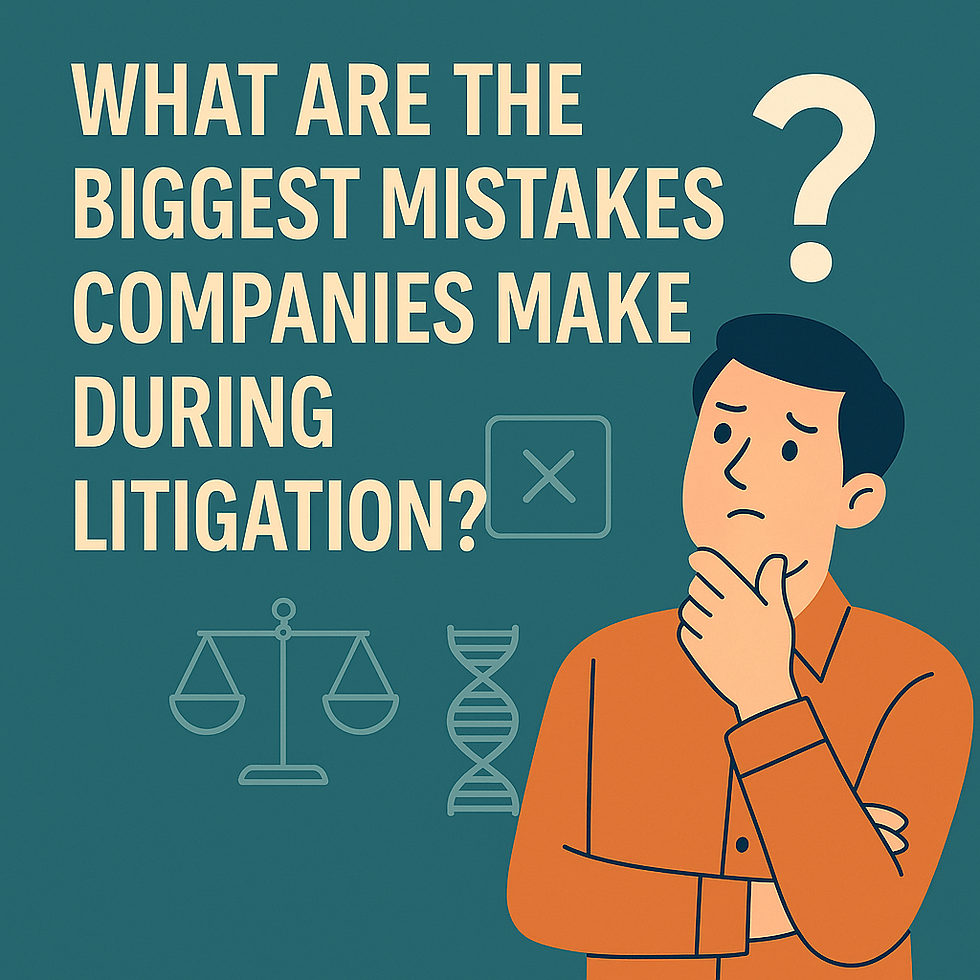What Are the Biggest Mistakes Companies Make During Litigation?
- Dennis Sapien-Pangindian
- May 27
- 2 min read

Litigation is often high-stakes and high-pressure—and how a company manages it can make a major difference in the outcome. While no business intends to make mistakes during a lawsuit, certain missteps are all too common. Identifying these pitfalls in advance can help companies navigate litigation more strategically and protect their long-term interests.
1. Failing to Preserve Evidence
One of the most damaging missteps is failing to preserve relevant evidence once litigation is anticipated. Courts can impose severe penalties, including adverse inferences or even dismissal of claims, when companies are found to have lost or destroyed evidence. Businesses should immediately implement a litigation hold and involve IT and legal departments to secure documents, emails, messages, and other records. Waiting too long can result in irreversible data loss.
2. Letting Emotions Drive Strategy
Litigation can stir up frustration, anger, or a desire to 'get even.' But decisions made out of emotion instead of strategy can backfire. Fighting over every issue, refusing to negotiate, or trying to 'punish' the other side may increase costs and risks. Successful litigation strategy involves setting clear goals, staying focused on outcomes, and recognizing when compromise serves the bigger picture.
3. Poor Internal Communication
Lack of coordination within the company can derail litigation efforts. Departments may withhold information, provide conflicting stories, or fail to follow legal instructions. It’s essential that legal teams are looped into major developments and that key employees understand their roles in the process. Creating a unified litigation response helps ensure consistent messaging and avoids surprises in discovery or trial.
4. Underestimating the Cost and Commitment
Litigation can be expensive, time-consuming, and disruptive. Companies that don’t fully appreciate this may overcommit, drain resources, or abandon litigation midway. Creating a litigation budget and timeline—and regularly reassessing them—is critical. Leadership should view litigation as a business investment, weighing cost, risk, and likelihood of recovery or resolution.
5. Ignoring Opportunities to Settle
Some businesses adopt a 'we’ll see them in court' mentality, overlooking the value of settlement. While some cases must go to trial, many can be resolved early through negotiation or mediation. Ignoring these options may result in higher legal fees, damaged relationships, and uncertain verdicts. A flexible mindset can open doors to creative, cost-effective resolutions that meet business goals.
6. Not Preparing Key Witnesses
Witnesses can make or break a case. If they’re poorly prepared, inconsistent, or don’t understand their role, they may weaken the company's position. Effective witness preparation includes mock questioning, clear communication about the process, and alignment on key facts. Don’t assume that subject matter expertise equals courtroom readiness—practice matters.
7. Overlooking Public Relations Impact
Litigation often spills over into the public domain, especially in high-profile or consumer-facing disputes. Failing to manage external messaging or anticipate public perception can lead to reputational harm. Companies should work with legal and communications teams to align messaging and prepare for media scrutiny.
Conclusion
Litigation is complex, but avoidable mistakes can make it even more difficult. By taking a proactive, informed, and coordinated approach, companies can minimize risk, control costs, and keep the focus on what matters most: reaching a resolution that supports long-term business goals.




Comments